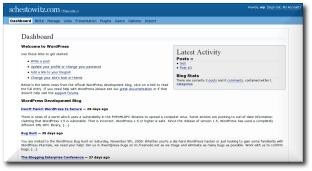Bill Gates Workaholism

“Hurry! Hurry! Lotsa’ work to do, guys!”
I have found the following old page, from which I would like to borrow a snippet.
He’s (Bill Gates) a ferocious workaholic, who regularly puts in 80-hour weeks, and expects his employees to do the same. And although he’s something of a visionary, he’s not a particularly reliable one; he never meets product deadlines, and the goods he so tirelessly promotes are mostly vaporware. God, like Gates, owes his power and success less to the quality of his product than to his ruthless business sense. He’s created a near monopoly by outmuscling the competition. You might not like this universe, just as you might not like Microsoft’s clunky programs; but pragmatically speaking, where else do you have to go?
Related item: Roots of Authority






 Filed under:
Filed under: 
 NTIL about 3 years ago I was using
NTIL about 3 years ago I was using 

 NN runs an article on that well-understood impact
NN runs an article on that well-understood impact 
 ORDPRESS is a free PHP/MySQL blogging software, which has changed people’s perspective on self-hosted sites. With nearly a million downloads of its previous version, it accommodates a large number of sites where it is also used as a professional CMS. The alMatty (sic) WordPress 2.0 was out yesterday (that’s right! Boxing Day) and it offers many enhancements over its predecessor. In particular, it incorporates a WYSIWYG editor and makes state-of-the-art use of Javascript and CSS.
ORDPRESS is a free PHP/MySQL blogging software, which has changed people’s perspective on self-hosted sites. With nearly a million downloads of its previous version, it accommodates a large number of sites where it is also used as a professional CMS. The alMatty (sic) WordPress 2.0 was out yesterday (that’s right! Boxing Day) and it offers many enhancements over its predecessor. In particular, it incorporates a WYSIWYG editor and makes state-of-the-art use of Javascript and CSS. 



 T is no secret that I am an avid KDE fan. I would definitely
T is no secret that I am an avid KDE fan. I would definitely